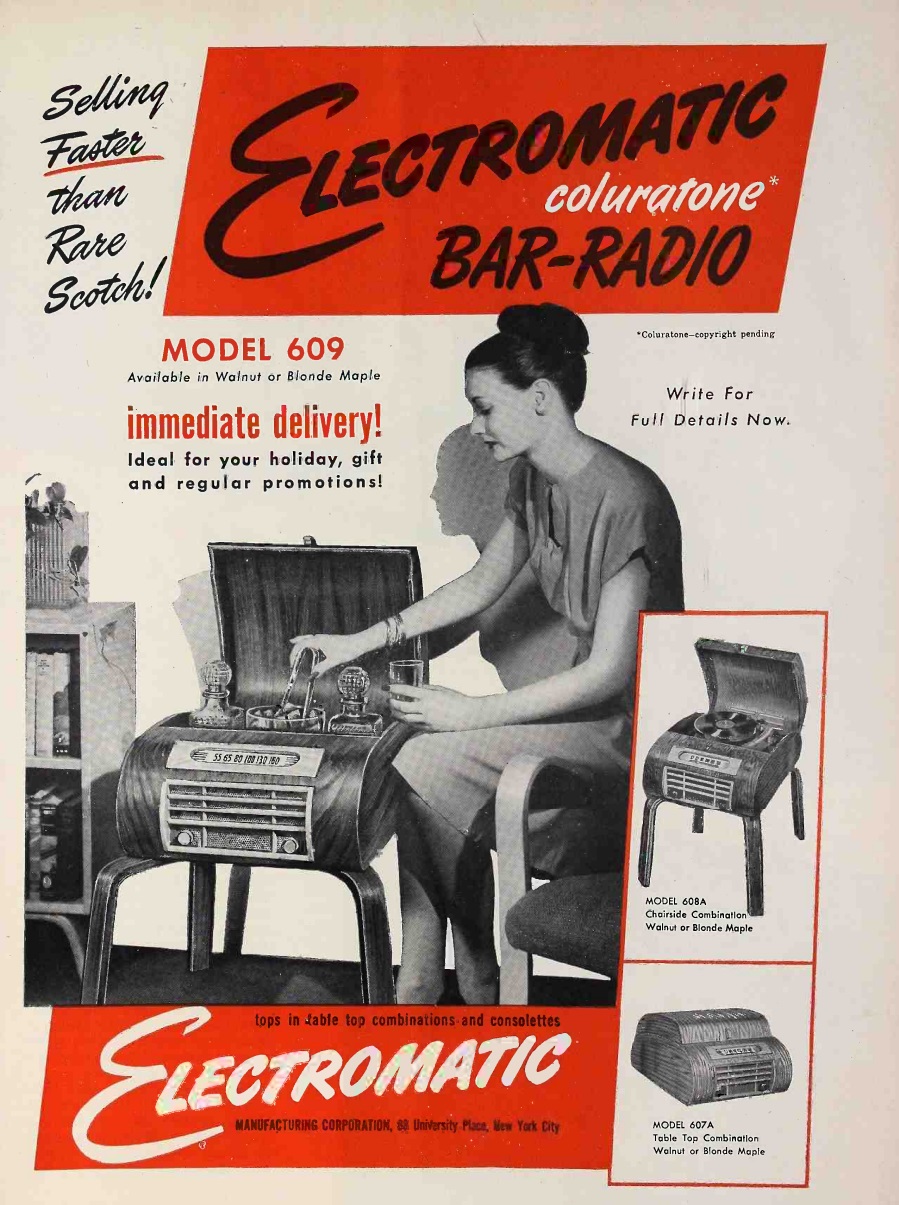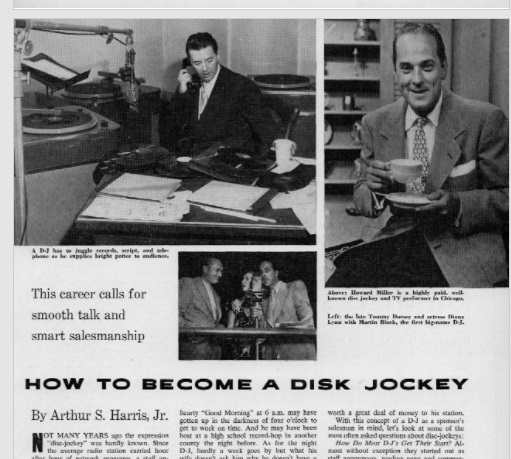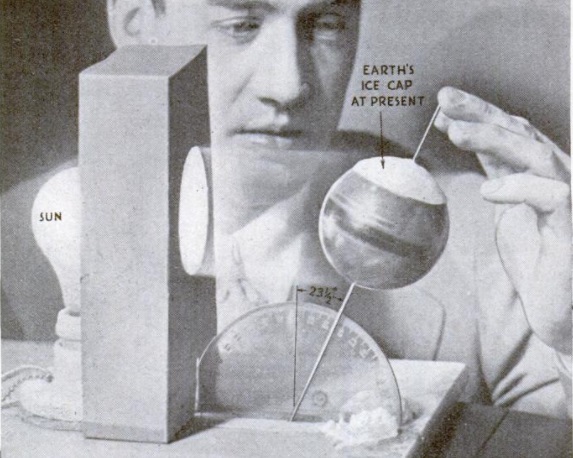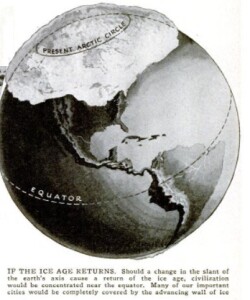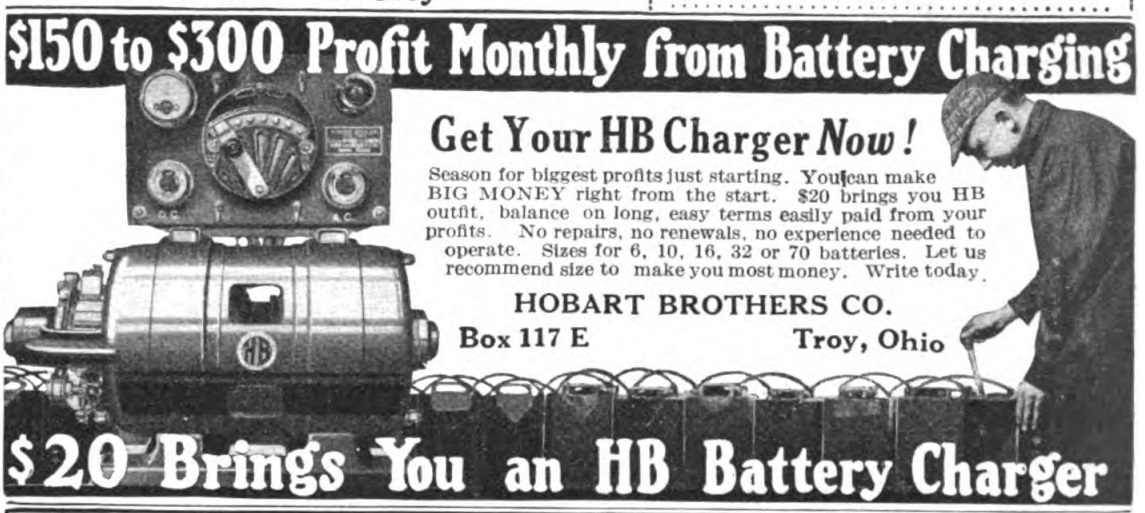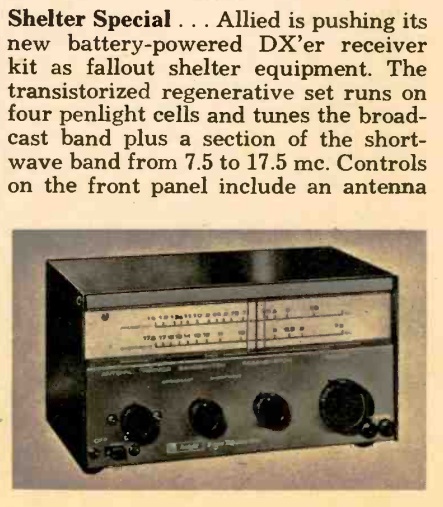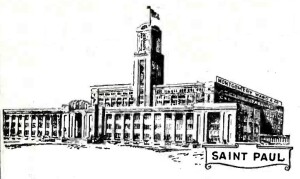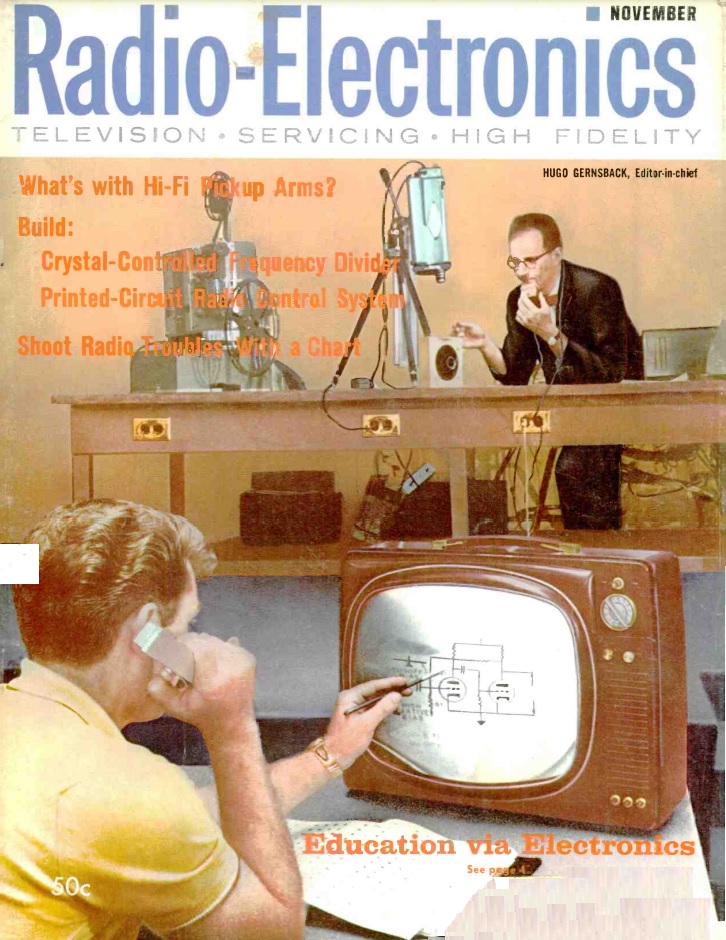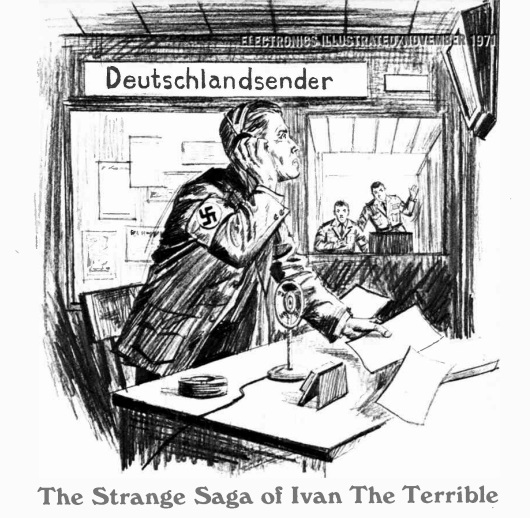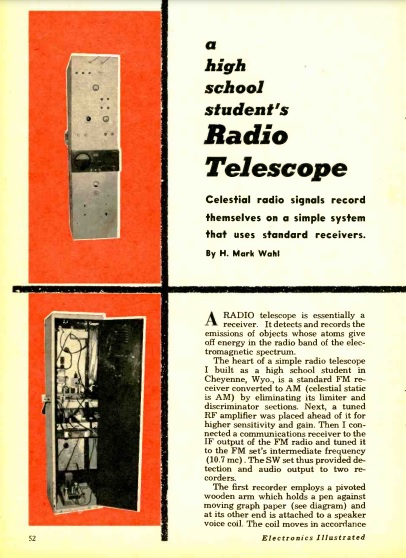 Sixty years ago this month, the November 1961 issue of Electronics Illustrated featured this radio telescope constructed by high school student H. Mark Wahl of Cheyenne, Wyoming. The rack containing the electronics was a school locker. The door of the locker was removed to form the door, and the equipment was mounted facing what used to be the back.
Sixty years ago this month, the November 1961 issue of Electronics Illustrated featured this radio telescope constructed by high school student H. Mark Wahl of Cheyenne, Wyoming. The rack containing the electronics was a school locker. The door of the locker was removed to form the door, and the equipment was mounted facing what used to be the back.
The equipment consisted of a standard FM broadcast receiver which had been converted to AM by eliminating the limiter and discriminator. A tuned RF amplifier, apparently for 108 MHz, was added to beef up the sensitivity. The IF output was connected to what looks like a Hallicrafters S-30B tuned to 10.7 MHz. This fed two recorders, one connected to the voice coil of the receiver’s speaker, and the other one connected to the S-meter. The recording of the audio output was accomplished with a pivoted wooden arm. The other end held a pen which recorded on a strip of paper driven by a motor.
The recorder hooked to the meter consisted of a straw from a broom, which recorded a trace on a soot-covered cylinder turned by a wind-up alarm clock, creating a 12 hour record.
The antenna consisted of two folded dipole antennas, probably made out of TV twin lead, mounted horizontally and parallel to each other, about a hundred feet apart. With identical lengths of feed line, the signals would arrive in phase, and be identical. The antenna pattern would have a number of lobes, one of which was straight up. However, if an additional half wavelength of feedline was added to one side, the two signals would arrive out of phase. The pattern would be similar, but the signal from straight up would be nulled out. By using the difference of these two signals, the interferometer was able to null out everything but the signal from straight up. Thus, any terrestrial interference would be eliminated, and the antenna would see only the cosmic noise coming in from directly overhead.
While we think of most radio astronomy taking place at higher frequencies, there’s no reason why frequencies just above the FM broadcast band can’t be used. For example, this 2014 experiment used 38 European radio telescopes to detect radio signals from a distant galaxy on 115 MHz. Those 38 dish antennas probably provided a better signal than two folded dipoles a hundred feet apart, but they used the same principles to combine the signals.
Unfortunately, the article doesn’t give too many practical details on the construction of the set. And other than the author’s assertion that it was “relatively simple, but it works,” there’s little detail on what observations he made.
We’ve previously written about another group of students in Britain who built a radio telescope in 1959. This website specializes in science fair projects that a student and frazzled parents can whip together in one evening, and we have many that fit that category. Building your own radio telescope is definitely not in that category. But students were doing so 60 years ago, and there’s really no reason why an advanced student (or maybe a student who’s not so advanced, but just likes to tinker with electronics) can’t do the same thing today.
Some links on this site are affiliate links, meaning this site earns a small commission if you click on the link and make a purchase.


